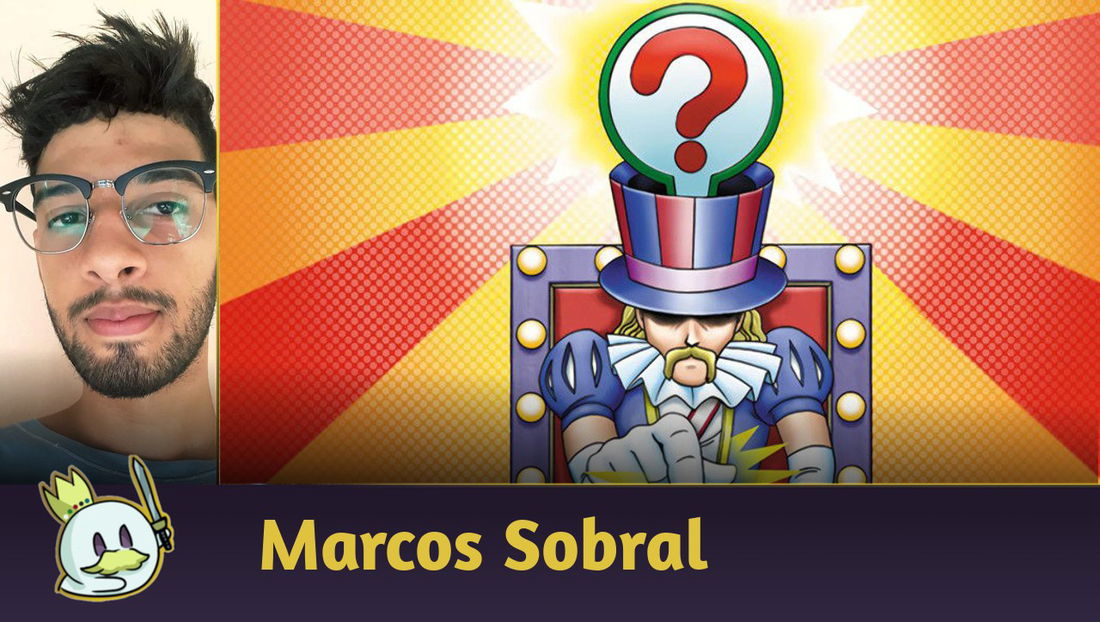Introduction
Throughout Yu-Gi-Oh! TCG history, some cards have stood out for breaking the limits of the game when it comes to balance. These cards were nicknamed by players as "broken cards" - and, in this article, we'll show you the worst of them.
Check out below the most broken cards in Yu-Gi-Oh! TCG!
The Top 10 Most Broken Cards in the History of Yu-Gi-Oh! TCG
10 - Victory Dragon
Victory Dragon is possibly the most "useless" card in this list, particularly for a competitive deck. However, it is banned nowadays because it is extremely broken. Its unique alternative win condition simply makes you win the entire match automatically.
That's right! After you attack your opponent directly with Victory Dragon and set their LP to 0, you'll win the entire best of 3, not just one game.

9 - The Forceful Sentry
The Forceful Sentry is one of the old Power Spells and has been banned for a long time. The main reason is that it is incredibly strong when you go first, as it lets you look at your opponent's hand, pick a card, and force them to shuffle that card back into their deck.
You don't need to do anything else or meet any condition to use it, and you can even use it more than once per turn. It would be insane if we ever did.

8 - Apollousa, Bow of the Goddess
Apollousa, Bow of the Goddess was, for a long time, the main generic negate in the game. It was banned in a format where Snake-Eye, the best deck at the time, could summon it very easily and very early on. It would then protect its entire combo for the rest of the game.
Apollousa's sin was being a monster negate that you could use 2 to 3 times in a single turn. And, because it was extremely generic, it made Yu-Gi-Oh! TCG more powerful overall just by existing.

7 - Fairy Tail - Snow
Fairy Tail - Snow is the type of card that, at a first glance, doesn't seem too problematic. However, in practice, it always makes the game worse when it's out of the banlist.
Snow only has a Book of Moon effect, but it essentially lets you interact with the opponent in multiple ways at once because you can keep it in your graveyard and keep playing your board on the table. Furthermore, you can use its effect more than once per turn, and many decks can get a lot from this by creating a loop around it.

6 - Artifact Scythe
Artifact Scythe has always been quite strong because its lingering effect prevents the opponent from special summoning anything from their extra decks. It is, as such, considered an "anti-game" floodgate.
In modern Yu-Gi-Oh! TCG, most decks in the meta rely a lot on their extra decks, so, once the main decks started to focus on the scary "Scythe Combos", the game became incredibly toxic. Right after that, this card was banned.

5 - Dimension Shifter
Dimension Shifter is another floodgate with a lingering effect, but it lasts for 2 turns when you activate it, which makes it a lot more damaging overall.
Though it essentially "disables" the graveyard, which is essential for most decks nowadays, "Shifter" is the only card in this list that isn't banned. It is "only" limited to one copy.

4 - Predaplant Verte Anaconda
Predaplant Verte Anaconda can "copy" the effect of 1 "Fusion" or "Polymerization", Normal or Quick Spell in your deck after it sends it to your graveyard.
It might seem just a support card for decks centered around fusion summoning, but we could easily summon this card with any deck that could play 2 monsters on the board. Furthermore, fusion cards that use materials in your deck made this card a lot more popular than it already was.
So, "Verte Anaconda" was banned for being too generic. This quality made practically all decks in the meta use it as a "plan B" in case their main combo was interrupted with handraps, similar to what Moon of the Closed Heaven does in Fiendsmith.
Initially, Red-Eyes Dark Dragoon was the boss monster we used, but, at its peak, this "combo" used Destiny HERO - Destroyer Phoenix Enforcer, which dominated the meta in its golden age.

3- Mystic Mine
Mystic Mine was one of the most hated Yu-Gi-Oh! TCG cards in its time, and it could be higher up in this list if it weren't better when you go second. As it is, though, it is less impactful than other cards.
At its peak, a few decks went so far as focusing exclusively on stalling the game with Mystic Mine and preventing the opponent from activating Monster effects and declaring attacks. This would go on until they won the duel through effects that deal damage to the opponent's LP. Furthermore, even combo decks used it as a boardbreaker to disable the enemy board.
Mystic Mine certainly made the meta a lot worse in its time.
2 - Imperial Order
Imperial Order's history shows how broken it is, considering it was banned, then unbanned after KONAMI released errata for it, and then banned again.
If Anti-Spell Fragrance, which "just" delays Spells, is considered by many players one of the strongest floodgates in the game, what can we say about Imperial Order? It is simply too powerful, as it completely disables Spells while it is face-up on the board.

1 - Maxx "C"
Maxx "C" is definitely the most broken Yu-Gi-Oh! TCG card of all time. In the TCG, it is banned, but, in the OCG, it is still a meta-defining card.
Maxx "C" is so broken that its effect became the inspiration for the powerful "Mulcharmy" cards that are now defining the meta.

Maxx "C"'s effect is worth 3 "Mulcharmy" cards, and includes no restrictions. This way, you can also activate it when you go first, while you have cards in play.

Final Words
Do you agree with our picks? Tell us your thoughts in our comment section below.
To keep exploring the Yu-Gi-Oh! TCG universe, keep browsing our articles.
Thank you for reading, and see you next time!













— 코멘트 0
, 반응 1
첫 댓글을 남겨보세요